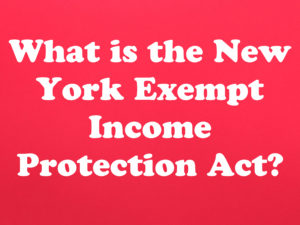By: Robert J. Nahoum
A debt collector with a New York state court judgment has a powerful tool at its disposal to enforce the judgment and collect money from the judgment debtor called a restraining notice. A restraining notice is a judgment enforcement device that restrains anyone holding property of the judgment debtor from releasing that property. The most common example of a restraining notice is where the judgment creditor serves a bank. If the bank is holding money belonging to the judgment debtor, the restraining notice precludes the bank from releasing those funds. Not only that, the bank is required to freeze double the amount of the judgment.  For this reason, a restraining notice resulting in a frozen account can create an immediate and desperate need for the judgment debtor. Checks can bounce, rent can go unpaid and groceries might not be bought.
Recognizing the power of the restraining notice and the need to protect the exempt income of consumers, in 2009, New York implemented the Exempt Income Protection Act (EIPA). The law’s intent is to protect low-income consumers from seizure of exempt income by debt collectors.
EIPA provides that when exempt funds are directly (i.e., electronically) deposited into a consumer’s bank accounts within 45 days of the date the restraining notice was served on the bank, the first $2,625.00 of the account is not subject to any restraint. For accounts without directly deposited exempt income, EIPA provides that the first $1,920 is exempt from restraint.
EIPA also contains consumer friendly procedures for releasing frozen accounts intended to simplify and expedite the process for releasing restrained accounts. Before EIPA, when an account was restrained containing exempt funds, the burden was on the consumer to make a motion to the court to exclude the exempt funds from execution. With such a heavy burden, consumers rarely went through the trouble of making such a motion. Under EIPA, if any funds are restrained, the consumer should receive a notice of the restraint and an exemption claim form, mailed by the bank.  The form is designed to be a self-explanatory, self-help measure. The consumer must complete the form within 20 days and mail it back to the judgment creditor’s attorney and the bank. If the debt collector believes the claim of exemption is wrong, the burden is on the debt collector to make a motion to void the claim of exemption and turn over the disputed funds.
EIPA is a strong measure designed to help protect consumers from the disruptive effects of freezing exempt assets.
If you need help settling or defending a debt collection lawsuit, stopping harassing debt collectors or suing a debt collector, contact us today to see what we can do for you.
The Law Offices of Robert J. Nahoum, P.C
(845) 232-0202
www.nahoumlaw.com
info@nahoumlaw.com

